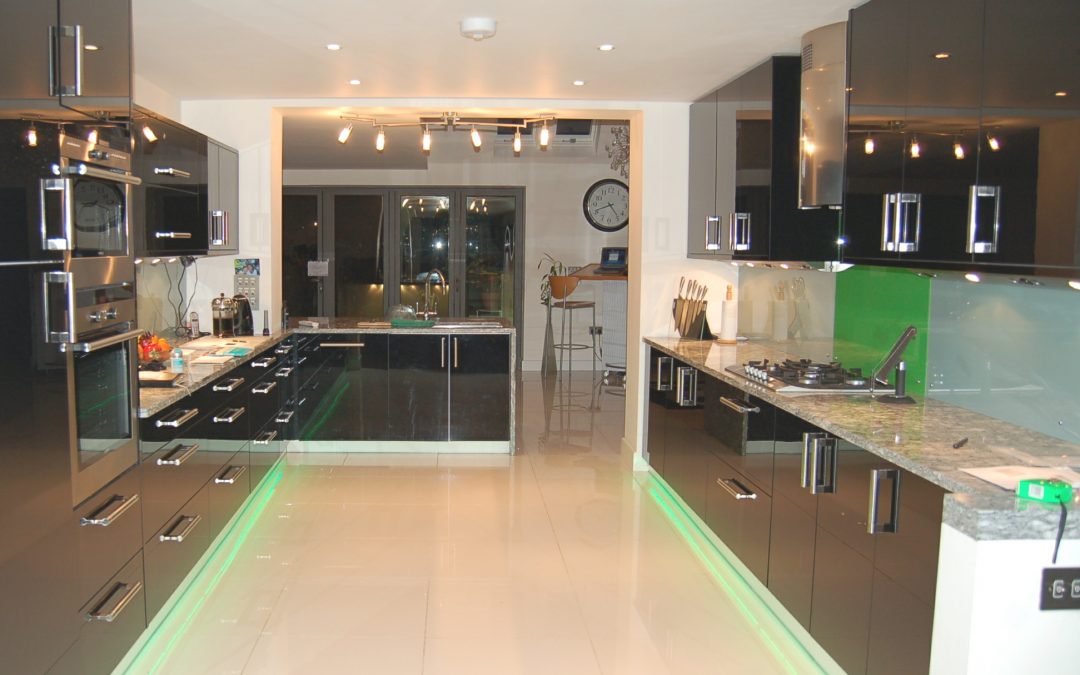Another in my series of ‘Ask the Experts’: Below is an article from Houzz which gives an overview on how to achieve a “stress free” Kitchen renovation…
For many of us, the kitchen is the hub of the house, the place where we spend most of our time. If that’s not the case and you’d like it to be, but you don’t quite like your kitchen enough, why not think about transforming it? After all, if you end up spending the majority of your time in there, it will be well worth it. Here are some simple tips to get you on your way.
Measure up accurately
The first thing you need to do is measure your current kitchen and dining space. Use metric measurements (metres) and include all doors, windows, fixed furniture, fuse boxes and the like.
If you’re not adept at using a tape measure, ask for assistance – it’s important to get it right. “Measure twice, cut once” is the golden rule, and that might often mean getting a second opinion from whoever will be fitting your kitchen.
Research a range of kitchens
The choice of where to source your kitchen is a very personal one, and a big decision for your home. Assemble an ideabook of your favourite kitchens, and ask for advice from friends and relatives who’ve had work done. Meet a few potential kitchen or design and fit companies, and trust your instincts – the company you click with will likely be the best fit for you.
Get the design right
Discuss your ideal kitchen with your chosen kitchen company. Give them your plans and allow them to make suggestions, even if you already have an idea of what you want. They’ll most likely have been in the business for a while, so may have some clever ideas you hadn’t considered.
Don’t be afraid to challenge their suggestions. Remember, only you know the nuances of your home and preferences. Your designer will probably welcome this input, and enjoy the challenge of finding a solution that works.
Cost it out
Ask your kitchen company or fitting service to cost your design. Request a detailed breakdown, so you can see which items will cost the most. This will enable you to see where you might need to trim.
Remember, there may be extra costs for removing any machinery, adding electrics, plumbing, tiling, flooring and painting. List all of these on a spreadsheet and get trade quotes for everything, including materials. Some design and fit companies can manage all of the tradespeople for you, but it’s still good to stay on top of everything yourself.
Agree a schedule
If you’re managing the project yourself, you’ll need to set the schedule for the works. How long will each trade take? Which trades can be overlapped? Are there any items that need time for delivery? Add all of these to a spreadsheet with dates of completion, and agree it with everyone involved.
Talk to all your suppliers and tradespeople to ensure you know how the project will run. Agree all dates by email or text, so you have written confirmation.
Stay on the job
Once the project begins, be sure to engage with all the tradespeople and suppliers. Communication is the key to a smooth-running project.
If anyone’s late or there’s an issue on site, let all the relevant tradespeople know – they will appreciate someone looking after the project. If they arrive on the agreed date and nothing is ready or the site is disorganised, they might be too busy to reschedule.
Protect everything
As most of the products you’re fitting will be part of the finished product, make sure you protect surfaces while the work progresses. Of particular importance are floors, tiles, windows and worktops. Covering items in painter’s dust covers or some old bed sheets will do the job nicely.
Embrace lists
As you approach the end of your renovation, you’ll find most things are complete but a lot of small jobs are still left to be finished. Make a list of all of these, with the name of the relevant tradesperson next to each item. Then group all of them together by name. When you ring each tradesperson, you’ll have a full list of remaining items, so you can agree a date for completion of everything in one go.
Test fittings and appliances
Check to make sure everything is working properly before you end the project. Inspect the oven, taps, hob, fridge, bins, cabinet carcasses, doors, lights, sockets, extractor, boiler, dishwasher and washing machine to ensure they all work properly. File the instructions and warranty documents for each somewhere safe.
Relax and enjoy
Take a break and enjoy what you’ve created. Have some family or friends over to celebrate. Cook a meal and show your kitchen off and see all of your hard work now pay off.
You’ve made it and now is the time to ENJOY!



